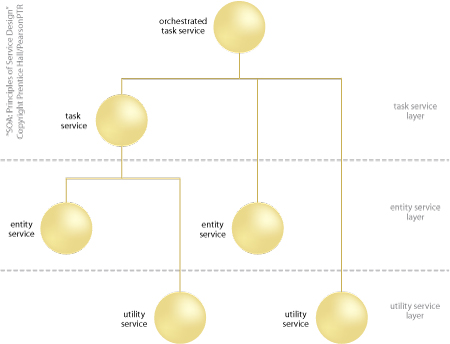SOA Patterns > Basics > What is SOA > Service-Oriented Computing in the Real World > Service Models and Service Layers
Service Models and Service Layers
Regardless of how services are implemented, they are commonly classified into one of the following service models:
- Entity Services
- Task Services (and Orchestrated Task Services)
- Utility Services
Service models help establish functional contexts and a functional boundaries services by providing generic, predefined types that are common to just about any IT enterprise.
Once established, service models can create conceptual service layers (logical groups) that can ease subsequent ownership assignment and overall service governance. Service layers also provide a unique perspective of the services within a given inventory, as most service compositions span multiple service layers.

Figure 1 – Service models classify services and establish logical service layers. Service compositions typically span most service layers.
For individual descriptions of service models visit SOA Methodology.

